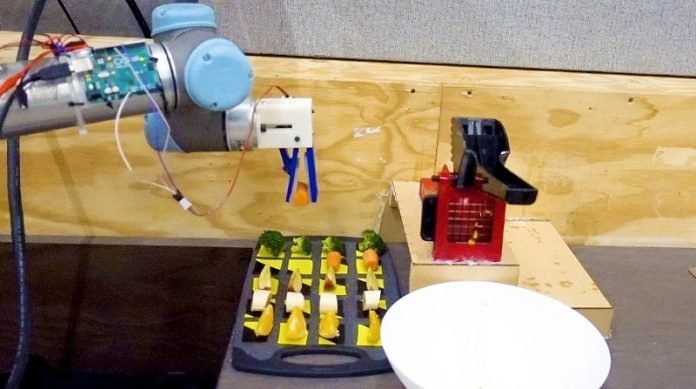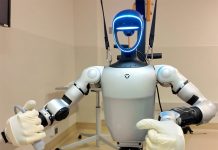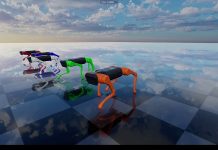
Researchers at the University of Cambridge have developed a robotic “chef” capable of learning and recreating recipes by watching cooking videos.
The team programmed the robot with a set of eight simple salad recipes and trained it to identify the ingredients and steps involved by analyzing video demonstrations.
The results, published in the journal IEEE Access, highlight the potential of using video content to enhance automated food production and pave the way for more accessible and cost-effective robot chefs.
The challenge of robotic cooking
While the idea of robotic chefs has long fascinated science fiction enthusiasts, teaching a robot to cook is a complex task.
Although some companies have created prototype robot chefs, they are not yet available commercially and still lag behind human chefs in terms of skill.
Unlike humans who can learn recipes through observation, programming a robot to prepare a variety of dishes has traditionally been time-consuming and expensive.
The researchers sought to train their robot chef to learn recipes in a similar incremental manner to humans.
They designed eight salad recipes and recorded themselves preparing them in videos. Using a pre-existing neural network capable of identifying various objects, including fruits and vegetables, the team trained the robot to recognize and understand the cooking process.
By employing computer vision techniques, the robot analyzed each video frame to identify objects, actions, and even the human demonstrator’s body parts.
Through accurate identification of ingredients and the chef’s actions, the robot could determine which recipe was being prepared.
It achieved an impressive 93% accuracy in identifying the correct recipe among 16 videos, even though it detected only 83% of the demonstrator’s actions.
The robot showcased its ability to recognize slight variations in a recipe, such as adjusting portion sizes or accommodating human error, and correctly classified them as variations rather than new recipes.
Additionally, the robot autonomously created a new salad recipe by detecting patterns in the demonstrations and seamlessly incorporated it into its cookbook.
The researchers were amazed at the robot’s ability to detect nuances in the videos.
Despite the simplicity of the salad recipes—consisting mainly of chopped fruits and vegetables—the robot successfully recognized differences in quantities and understood that similar ingredients prepared in different amounts constituted the same recipe.
The robot’s training videos differed from those found on social media platforms, as they were designed to be clear and easily understood by the robot.
However, as robotic chefs advance in their ability to identify ingredients in more complex videos, platforms like YouTube could become valuable resources for them to learn a wide range of recipes.
This groundbreaking research from the University of Cambridge demonstrates how robots can learn recipes by watching cooking videos.
By training a robot chef to recognize ingredients and cooking actions, the researchers have made significant progress toward the development of automated food production systems.
Although commercial robot chefs are not yet widely available, this study opens up new possibilities for the future of culinary automation and suggests that robots may eventually assist us in the kitchen, making cooking easier and more accessible for everyone.



